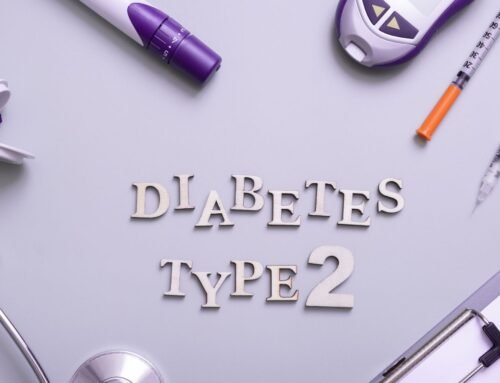In the vast and interconnected world we live in, COVID-19 emerged like an unexpected storm. Altering the landscape of our daily lives in ways we could never have anticipated. This virus, caused by the novel coronavirus SARS-CoV-2, has become a defining chapter in our global narrative—a story of resilience, adaptation, and, above all, collective care.
Understanding COVID-19, its treatments, and how to care for yourself and others is like learning to navigate through this storm with wisdom and compassion.
An Overview of COVID-19

COVID-19 is an infectious disease that primarily affects the respiratory system, though it can impact other parts of the body as well. The virus spreads mainly through respiratory droplets when an infected person coughs, sneezes, or talks. It can also spread by touching surfaces contaminated with the virus and then touching the face. The symptoms of COVID-19 can range from mild to severe and typically include:
- Fever or chills.
- Cough.
- Shortness of breath or difficulty breathing.
- Fatigue.
- Muscle or body aches.
- Loss of taste or smell.
- Sore throat.
- Congestion or runny nose.
- Nausea or vomiting.
- Diarrhea.
For some, COVID-19 may be nothing more than a mild inconvenience, like a brief rain shower. For others, particularly older adults and those with underlying health conditions, it can be a severe and even life-threatening illness, akin to a hurricane disrupting the peace of everyday life.
Treatment: Navigating the Storm
Treatment for COVID-19 depends on the severity of the illness. For most people, especially those with mild to moderate symptoms, treatment focuses on managing symptoms and supporting the body’s recovery.
- Rest and Hydration: Much like taking shelter during a storm, the body needs time to rest and recover. Staying hydrated is crucial, as it helps maintain bodily functions and supports the immune system in fighting off the virus.
- Fever and Pain Relief: Over-the-counter medications like acetaminophen (Tylenol) or ibuprofen (Advil) can help reduce fever and alleviate body aches. It’s like applying balm to soothe the body’s discomforts, making the journey through illness a bit easier.
- Antiviral Medications: In more severe cases, antiviral drugs like remdesivir may be prescribed, especially if you’re hospitalized. These medications can help reduce the severity of the illness, much like fortifying your shelter against the storm.
- Monoclonal Antibodies: For those at high risk of severe illness, monoclonal antibody treatments can be administered early in the course of the disease to help prevent progression. Think of it as deploying a defense system before the storm reaches its full strength.
For severe cases, especially when breathing becomes difficult, hospitalization may be necessary, and treatments might include oxygen therapy, mechanical ventilation, or other supportive measures.
How to Care for Yourself at Home
Caring for yourself at home when you have COVID-19 is like creating a safe and nurturing space where your body can heal.
- Isolate: Stay in a separate room away from other household members and use a separate bathroom if possible. This prevents the virus from spreading to others, much like containing a fire to prevent it from engulfing the whole house.
- Rest: Your body is in the midst of a battle, and rest is your best ally. Don’t push yourself to “do it all”—instead, let your body guide you in knowing when to rest and when to be active.
- Stay Hydrated: Drink plenty of fluids, such as water, herbal teas, and broths. Staying hydrated is like keeping the engine of your body well-oiled, ensuring it can run smoothly even under stress.
- Monitor Symptoms: Keep an eye on your symptoms, especially if you’re at higher risk for complications. Use a thermometer to check your temperature and a pulse oximeter if you have one to monitor your oxygen levels.
- Use Comfort Measures: Humidifiers, warm showers, and gargling with salt water can help ease symptoms like congestion, sore throat, and cough. Think of these as small comforts that make the journey more bearable, like a warm blanket on a cold night.
Prevention: Guarding Against the Storm

Preventing COVID-19 is about taking proactive steps to protect yourself and those around you, much like preparing your home before a storm hits.
- Vaccination: Vaccines are the most effective tool we have to prevent severe illness and death from COVID-19. Getting vaccinated and keeping up with booster shots is like building strong walls around your home—providing robust protection against the virus.
- Wear a Mask: In crowded or indoor settings, wearing a mask helps reduce the spread of respiratory droplets. It’s a simple yet powerful tool, like using an umbrella to shield yourself from the rain.
- Practice Good Hygiene: Regular handwashing with soap and water, using hand sanitizer when soap isn’t available, and avoiding touching your face with unwashed hands are all important steps. Think of it as keeping your armor clean and ready to protect you.
- Social Distancing: Keeping a safe distance from others, especially in crowded places, helps reduce the risk of transmission. It’s like steering clear of dangerous waters, avoiding unnecessary risks.
- Stay Home When Sick: If you’re feeling unwell, staying home helps prevent the virus from spreading to others. It’s an act of kindness and responsibility, much like staying indoors during a storm to protect yourself and others.
Common Causes: Understanding the Source
COVID-19 is caused by the SARS-CoV-2 virus, a novel coronavirus that first emerged in late 2019. It spreads primarily through respiratory droplets, but airborne transmission can also occur, particularly in enclosed spaces with poor ventilation. Understanding how the virus spreads is like understanding the weather patterns before a storm—knowledge that helps you prepare and respond effectively.
When Should You Call for Help?
Every journey has moments when you might need extra guidance, and dealing with COVID-19 is no different. You should seek medical help if:
- You have difficulty breathing or shortness of breath.
- You experience persistent pain or pressure in your chest.
- You become confused or can’t stay awake.
- Your lips or face turn bluish, indicating low oxygen levels.
These are signs that the storm is intensifying, and it’s crucial to get help immediately. Don’t hesitate—reaching out could save your life or the life of someone you love.
Conclusion
COVID-19 has tested our resilience and challenged us in ways we never expected, but it has also shown us the power of collective care and the importance of taking responsibility for our health and the health of those around us.
By understanding the virus, following prevention measures, and caring for ourselves and each other, we can navigate this storm with strength and compassion. Remember, every step you take to protect yourself is also a step toward protecting your community. Together, we can weather this storm and look forward to brighter days ahead.
Care instructions adapted under license by Gam-Med Urgent Care. This care instruction is for use with your licensed healthcare professional. If you have questions about a medical condition or this instruction, always ask your healthcare professional. Gam-Med PLLC disclaims any warranty or liability for your use of this information.
Share This Story, Choose Your Platform!
Let’s Stay In Touch
Let’s Stay In Touch
Subscribe to the Gam-Med’s newsletter to stay in the know of changes, events, new policies and procedures.




